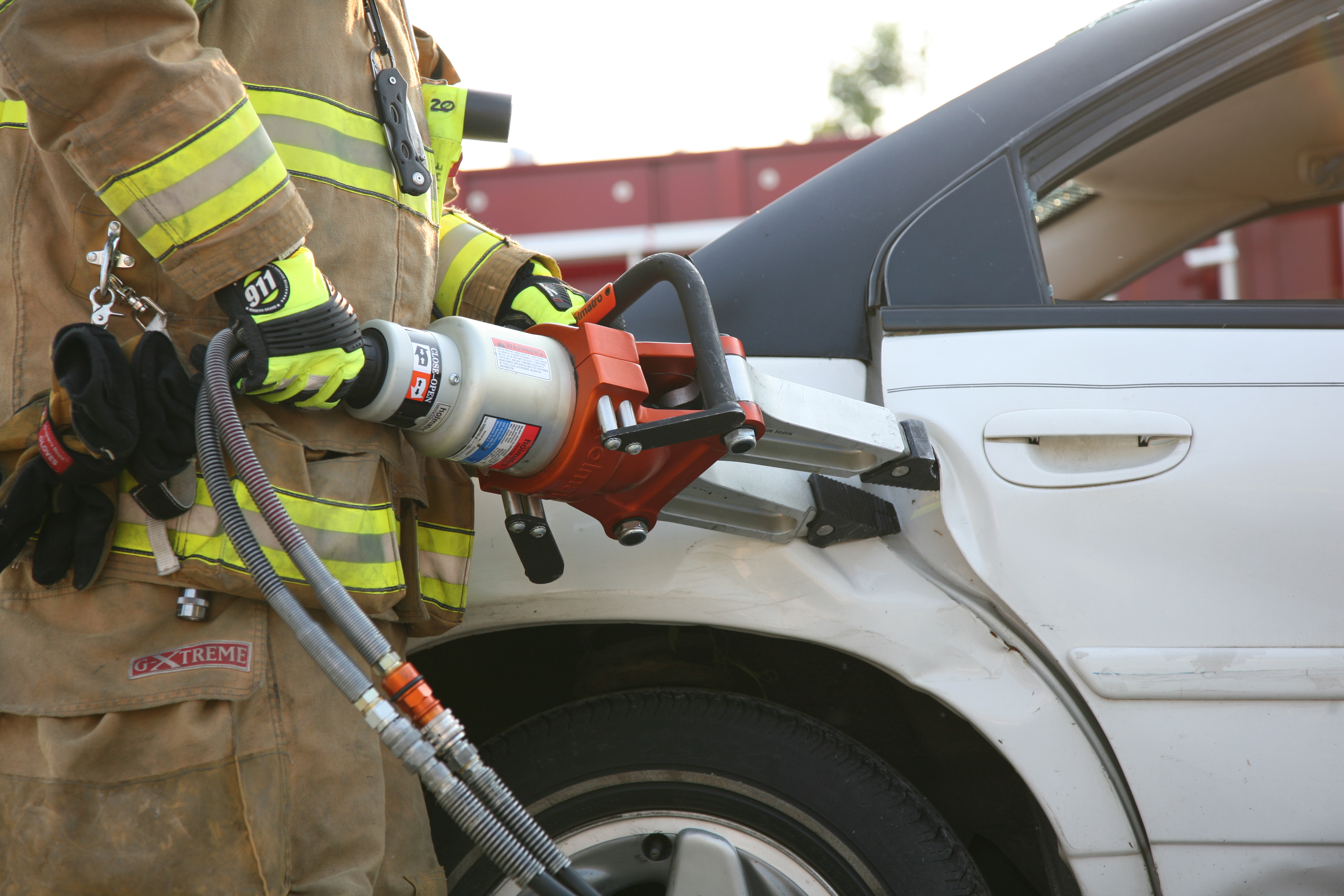Introduction
Emergency medical service (EMS) provides patient care in a variety of settings, from calm to chaotic. EMS providers frequently face challenges in gaining access to patients to provide care and also in extricating patients from the scene for transport. An example is a motor vehicle crash, where patients often become trapped in mangled vehicles. A less obvious example is the removal of a patient with obesity from the residence of a hoarder or the rescue of a victim who fell through the ice. A variety of techniques are used to remove the patients from their entrapment, and the appropriate technique depending on the situation. The essential focus for EMS providers, regardless of the situation or scene, is personal safety.[1][2][3][4]
Issues of Concern
The primary concern for EMS providers of all levels on all scenes is personal safety. An EMS provider is of no use to a patient if he or she is injured or incapacitated. More importantly, EMS can be a dangerous job, and providers must ensure that they go home safe at the end of every shift.
Ensuring scene safety begins at dispatch. From the time an EMS crew receives the notification of a call, they should be conscientious of potential dangers associated with the scene. For example, a vehicle crash scene provides many significant risks, from fires or downed electrical wires to broken glass or passing traffic. EMS crews should park strategically to avoid traffic, always use emergency lighting when parked on a road or other potentially dangerous scene, and wear reflective clothing to increase visibility. Even with these precautions, motor vehicle crash scenes still present a danger to emergency medical technicians (EMTs) and paramedics, so situational awareness is paramount. Also, airbags that do not go off with the initial impact may deploy during extrication or patient care. While airbags save lives during a crash, when deployed later, they may cause devastating injuries or even death. EMS providers should be aware of this potential hazard as they work accident scenes.
Scenes not involving car crashes and roads still have the potential for danger, so crews should never let their guard down. EMS should consider violent patients, family members, and bystanders. Teams should never enter a scene that is not secure or has the potential for violence until law enforcement has ensured safety. Still, other dangers exist and must be considered, including chemical hazards such as carbon monoxide.
The appropriate method for gaining access and extricating patients depends on the scenario, but some basic principles apply to all situations. Any structure involved should be stable. For example, an overturned car requires support to prevent it from changing position, which could endanger both the patient and the EMS crew. Multiple techniques and pieces of equipment exist for this purpose, ranging from basic wood-block cribbing to pneumatic airbags to sophisticated strut systems. EMS personnel must be familiar with the equipment used by their agency and be comfortable with deploying it. In the event of a fire, explosion, or earthquake, EMS providers should not enter a structure until its integrity can be verified.
After deeming the structure as sound, EMS must gain access to assess and treat the patient, remembering to try the most straightforward route first. A good phrase to remember is "try before you pry." In other words, before you use force to open a door on either a car or a residence, first check the door. It may be unlocked, and getting to the patient is as simple as turning the knob. If the door is locked or inoperable from damage, then a forceful entry is necessary. A variety of tools and techniques exist for this. Whenever possible, law enforcement should be involved to ensure safety. The risks and benefits of forcing entry must be weighed and should only be performed when there is a reason to believe the patient is in imminent danger. Depending on the EMS agency and its capabilities, a forceful entry may be the task of a mutual aid agency, such as the fire department. Hydraulic tools, such as spreaders and cutters, commonly referred to by the general public as the "jaws of life," are often used to gain access to patients trapped by mangled metal, such as in a motor vehicle crash. Another popular device commonly utilized by the fire service is the Halligan bar, which combines a blade, a claw, and a tapered pick into one convenient tool. This device gives its user a great deal of leverage, and it is especially useful for opening or breaking through locked residential doors.
While the exact process for forceful entry to a car may differ based on equipment and situation, the overall concepts remain the same. Glass in windows can be taped in a criss-cross pattern before being broken to minimize the pieces that fall into the car onto the patient. A gap can be created between the door and the frame near the handle with a Halligan bar or other similar tool. Hydraulic spreaders can then be inserted into the gap and then used to spread the door from the frame. If the door requires complete removal from the vehicle, the same process is possible at the hinge of the door after initially opening it.
Gaining access may only be step one. Sometimes EMS may obtain access to the patient and begin treatment; however, if the patient remains trapped, they cannot be transported to the hospital for definitive care. The process for removing these patients from their entrapment can be complex and poses dangers to the patient and EMS; this is particularly important in significant trauma, such as major car accidents, as this may consume a large portion of the critical first hour of trauma care. EMS should provide whatever care they can to the entrapped patient safely, such as airway management or intravenous (IV) fluid administration. During the process of removing the patient from the situation, care is necessary to minimize movement of the spine to prevent the worsening of any possible injuries. Cervical collars should be placed as soon as is feasibly possible when a cervical spine injury is suspected. Long spine boards are frequently employed to move patients while maintaining spinal alignment during extrication. Short spine boards also exist for this purpose.
In motor vehicle crashes, patients may become trapped as the dash collapses down, pinning their legs. In this instance, delays in care are compounded as EMS must first gain access to the patient and then extricate him from the entrapment. Some care is possible after gaining access, but transport must wait for extrication. Hydraulic tools are typically used to lift the dash in these cases with a technique referred to as the dash roll. Again, EMS providers should be familiar with the capabilities and tools used by their agency.
In some situations, the roof of the car may require removal to extricate the patient. The windows must first be removed to accomplish this. Then, the rescuers cut the metal support posts between the windows with hydraulic cutters or similar tools. Depending on the needs for extrication, the rescuers can cut all of the posts, and the roof lifted off the car, or they can cut the front 2 to 4 posts and then fold the roof up and backward. To facilitate easy folding, a cut in each side of the roof at the desired folding point may be necessary.
Before performing any automotive extrication technique, providers should take a hands-on course. There are many intricacies to automotive extrication that are beyond the scope of this article. EMS personnel should only perform techniques they are trained to perform and should be familiar with their equipment. The National Fire Protection Agency, an agency that governs the fire industry, provides specific guidelines and regulations.
Extrication may also be necessary for industrial or farming accidents. As in other incidents, the specific method for extrication will vary depending on the situation. EMS agencies should be aware of hazards within their communities where such accidents may occur. For example, grain bins in farming communities present a unique danger. Entrapment in grain bins can quickly become fatal, and extrication is complex and dangerous. In communities with this potential, EMS agencies should practice and plan for grain bin rescues. Courses may be available to learn these techniques. If the complexity of extrication exceeds an agency's capabilities, it should not hesitate to request assistance from an appropriate mutual aid agency, such as a technical rescue squad.
In extreme circumstances, a patient may require a field amputation to be extricated and transported for definitive care. This approach is only used as a last resort when the patient would otherwise die if not freed immediately. In these situations, contact with medical control is vital. Be familiar with the agency's protocols for this situation.
Some EMS systems utilize physicians in the prehospital setting. In these situations, physicians may be able to provide advanced care to the entrapped patient until the completion of extrication. EMS systems with this capability should consider utilizing it, especially when prolonged extrication may be the expectation. Physicians providing this service should also practice scene safety and only perform extrication activities they have received training to perform.
Clinical Significance
Understanding the prehospital environment is extremely useful for emergency department clinicians. The scene of a traumatic injury can be chaotic, and understanding what the patient experienced before arriving in the emergency department can improve communication between the emergency department clinician and EMS, which may lead to more efficiency and improved care. The clinician must understand that delays often occur between the incident and arrival to the hospital. This understanding is critical in trauma resuscitation when time is of the essence. Extrication may be a traumatic process of its own, complicating the clinical picture.
EMS provides essential care in the prehospital setting. Providing that care while maintaining personal safety is imperative. EMTs and paramedics should also understand the importance of time during a trauma. Gaining access and extrication should be performed as quickly and efficiently as is safely possible. Ultimately, patients would never arrive in the emergency department without the dedication and hard work of EMS, who provide the critical intervention of extrication.[5][6][7][8]

